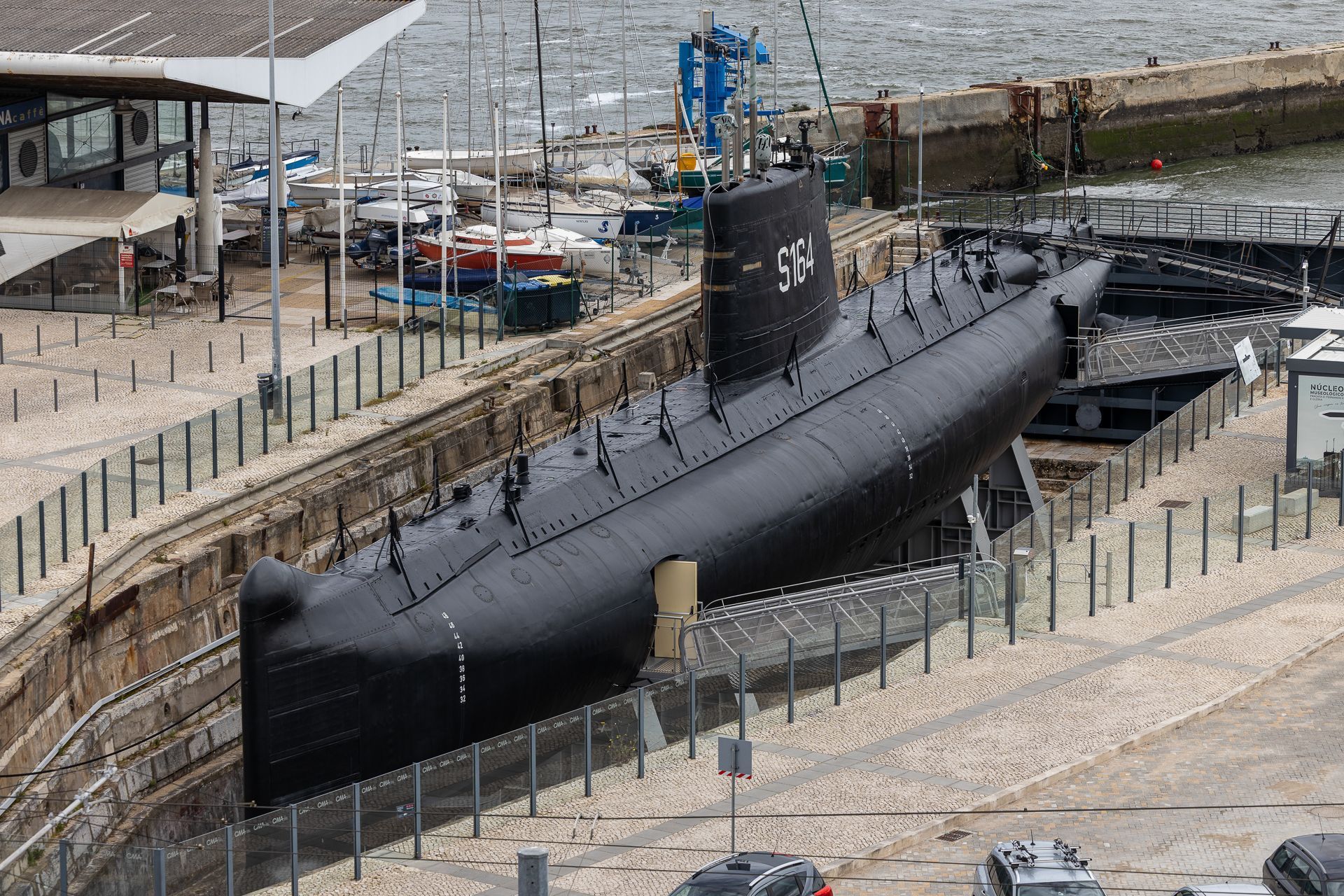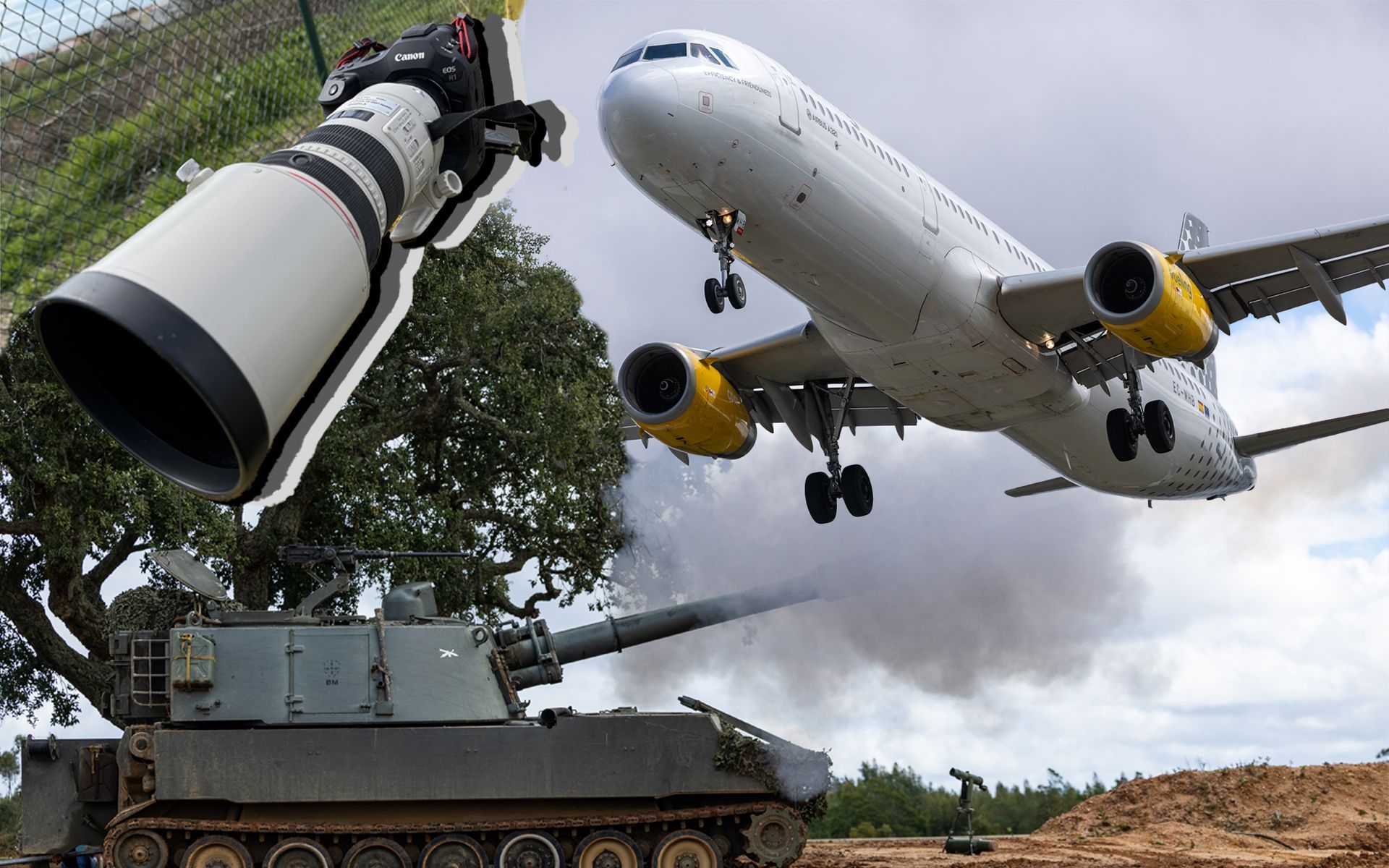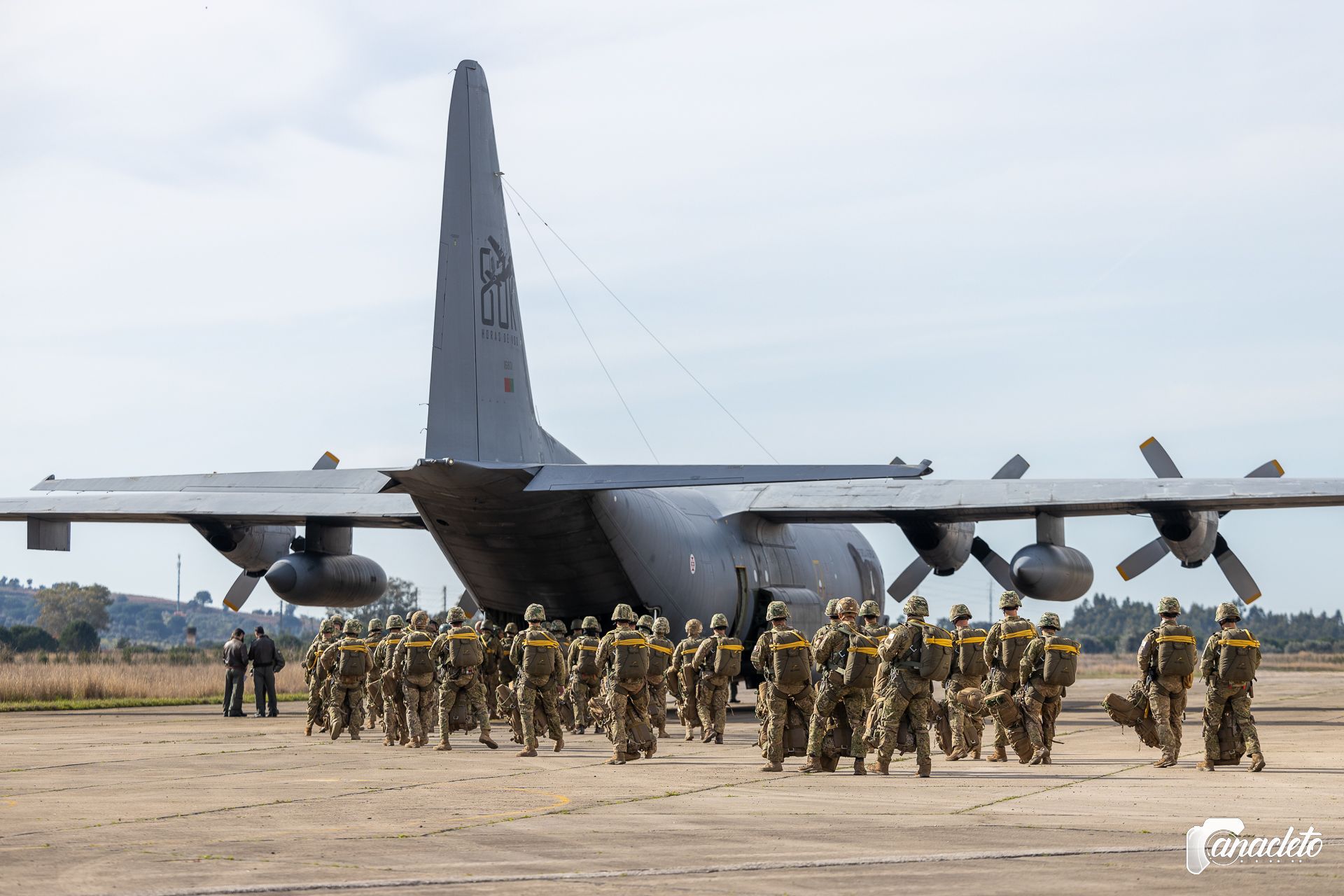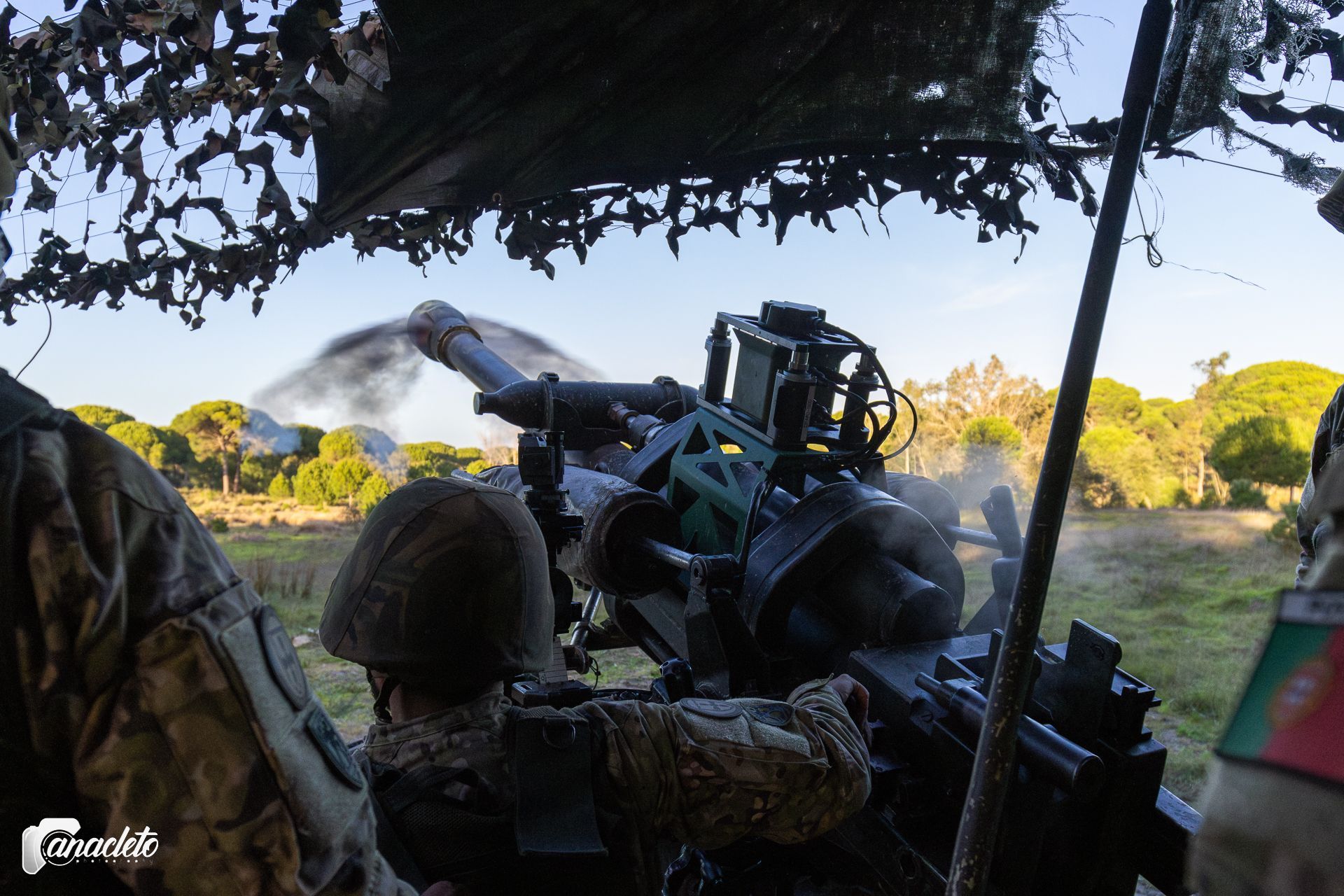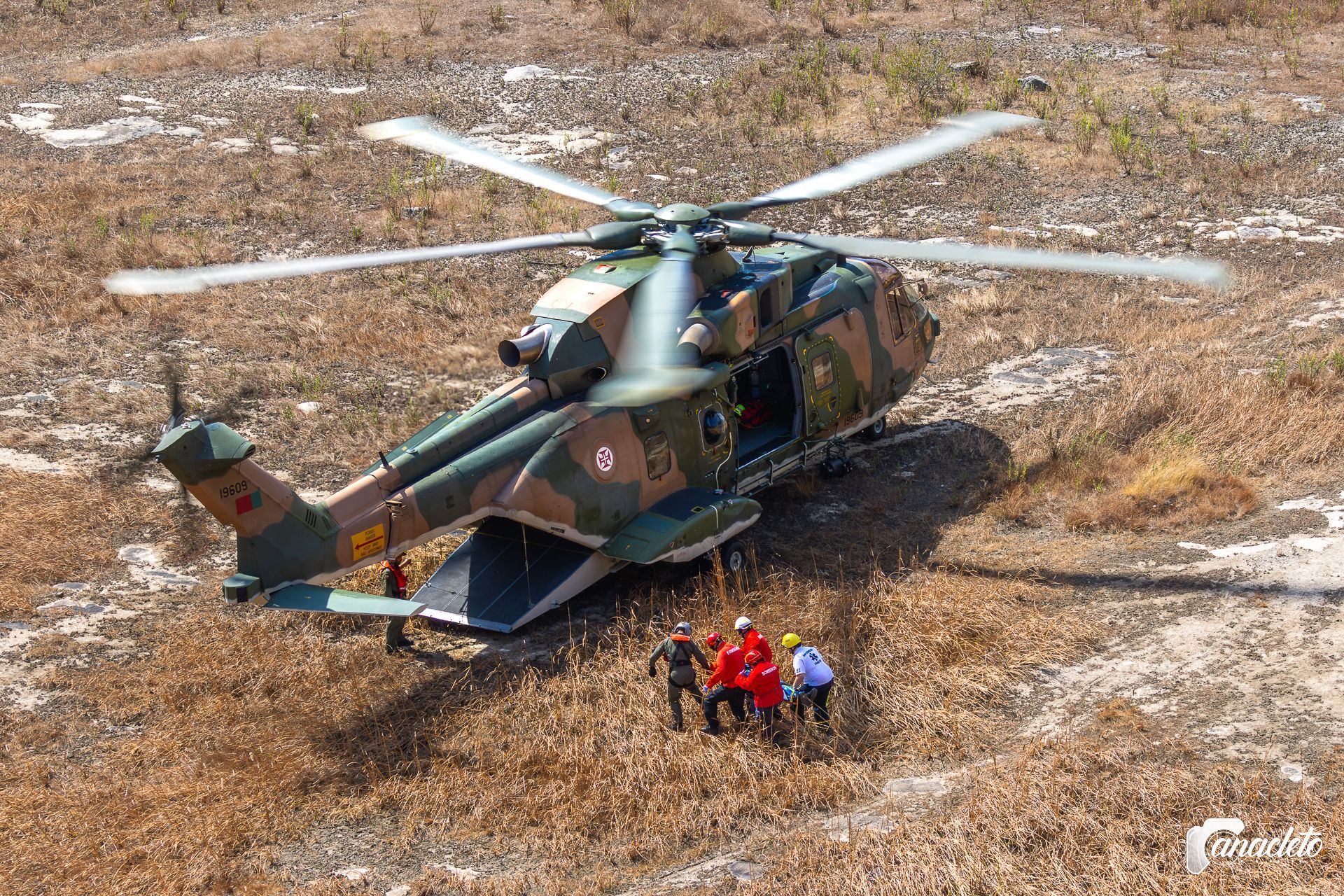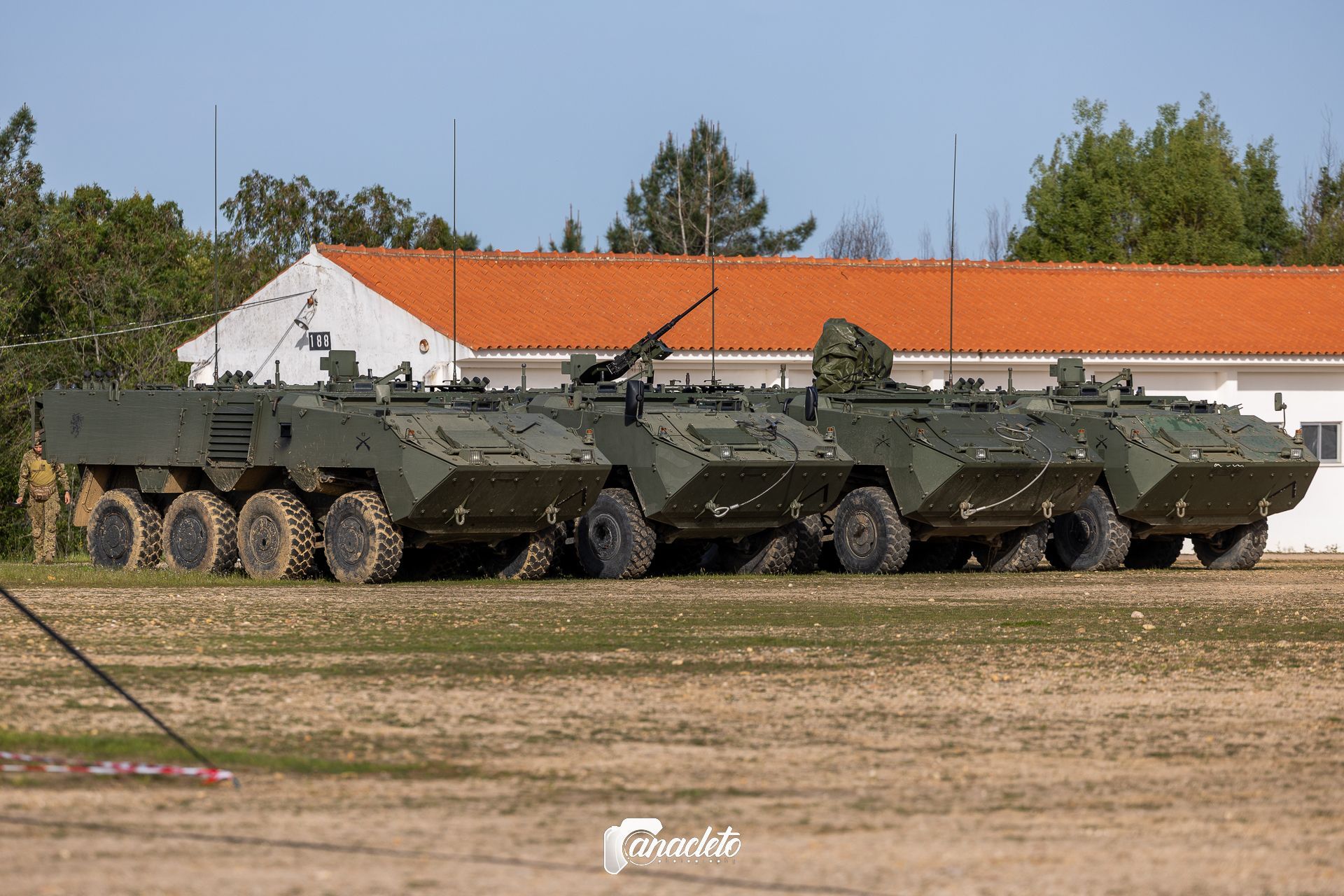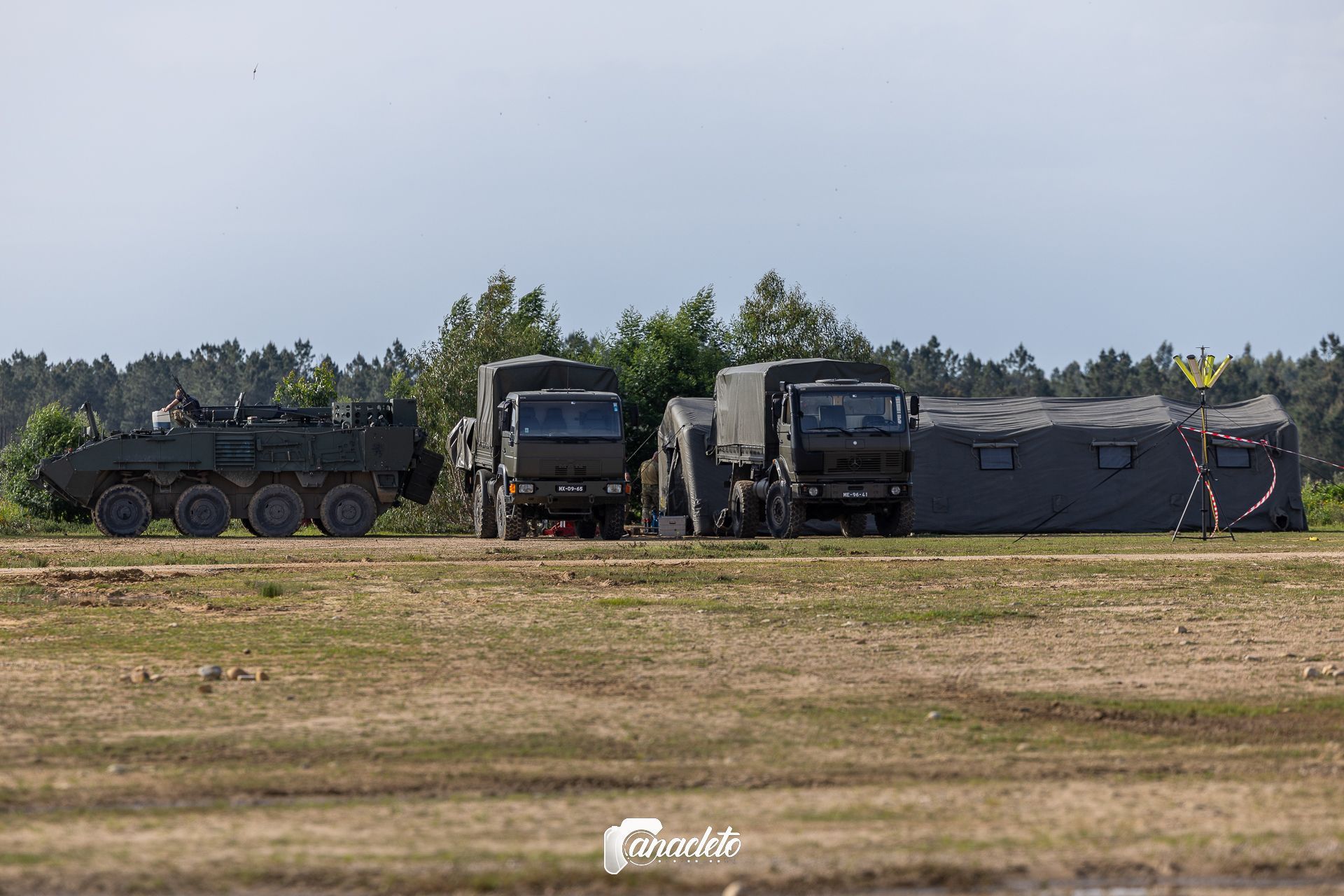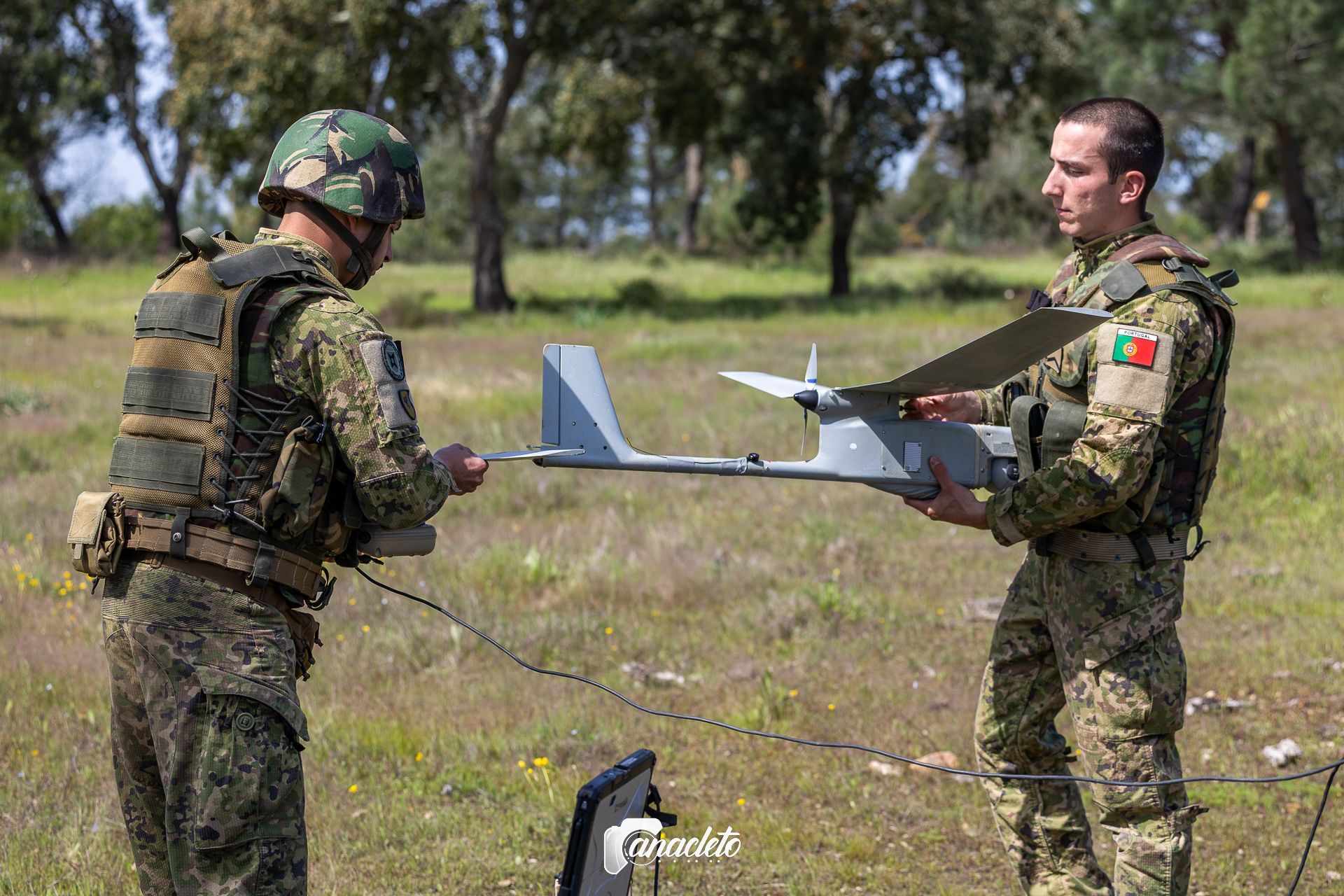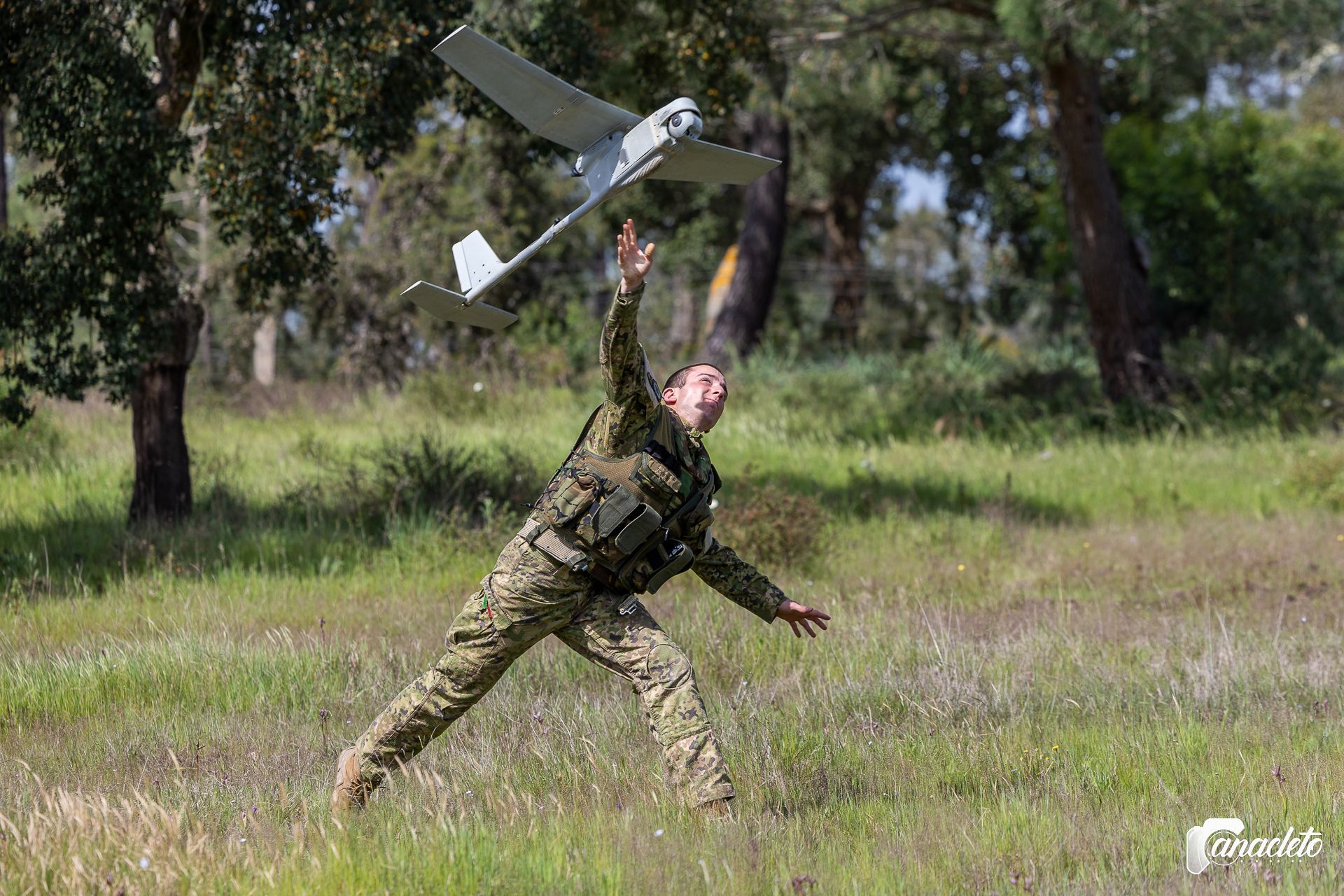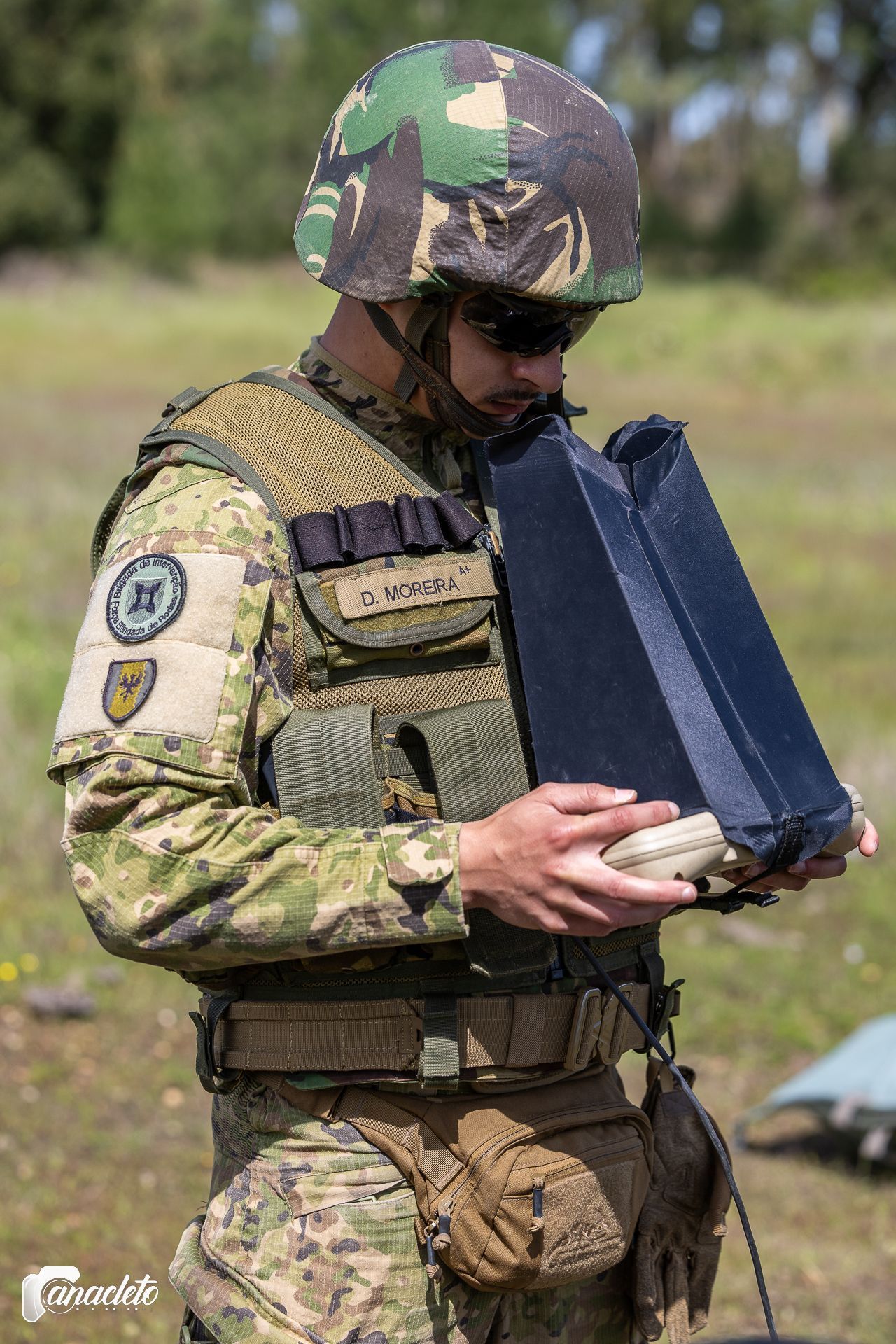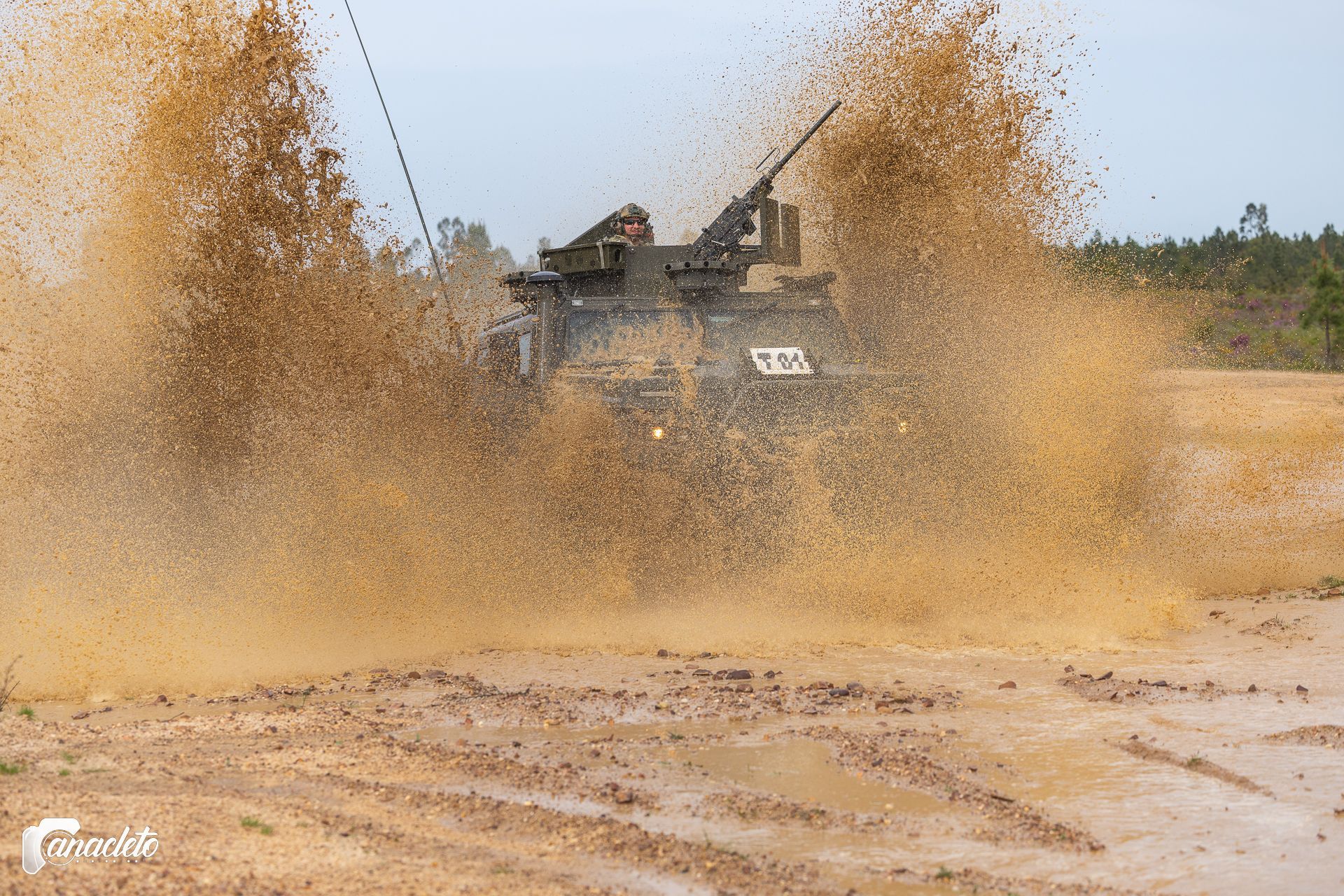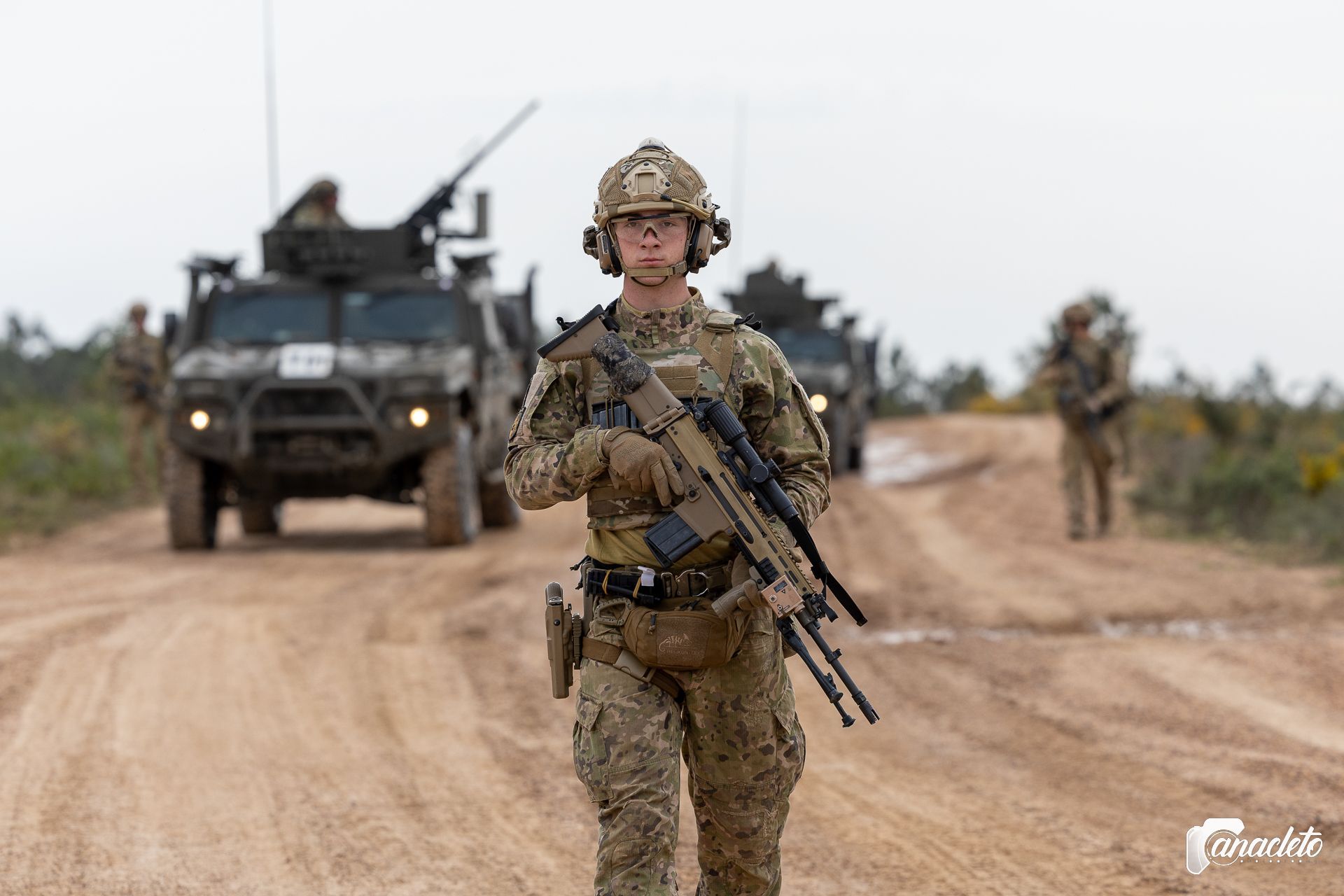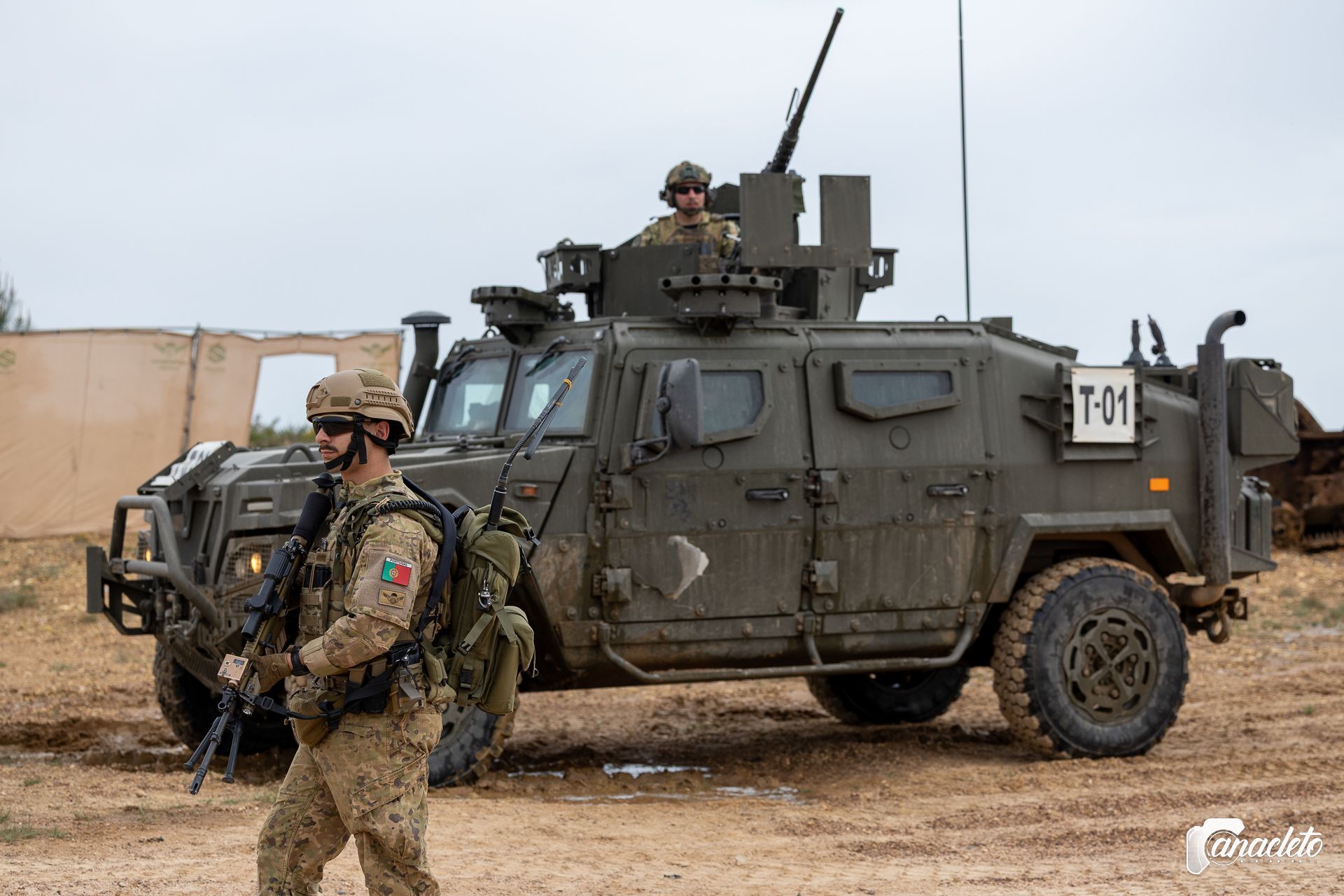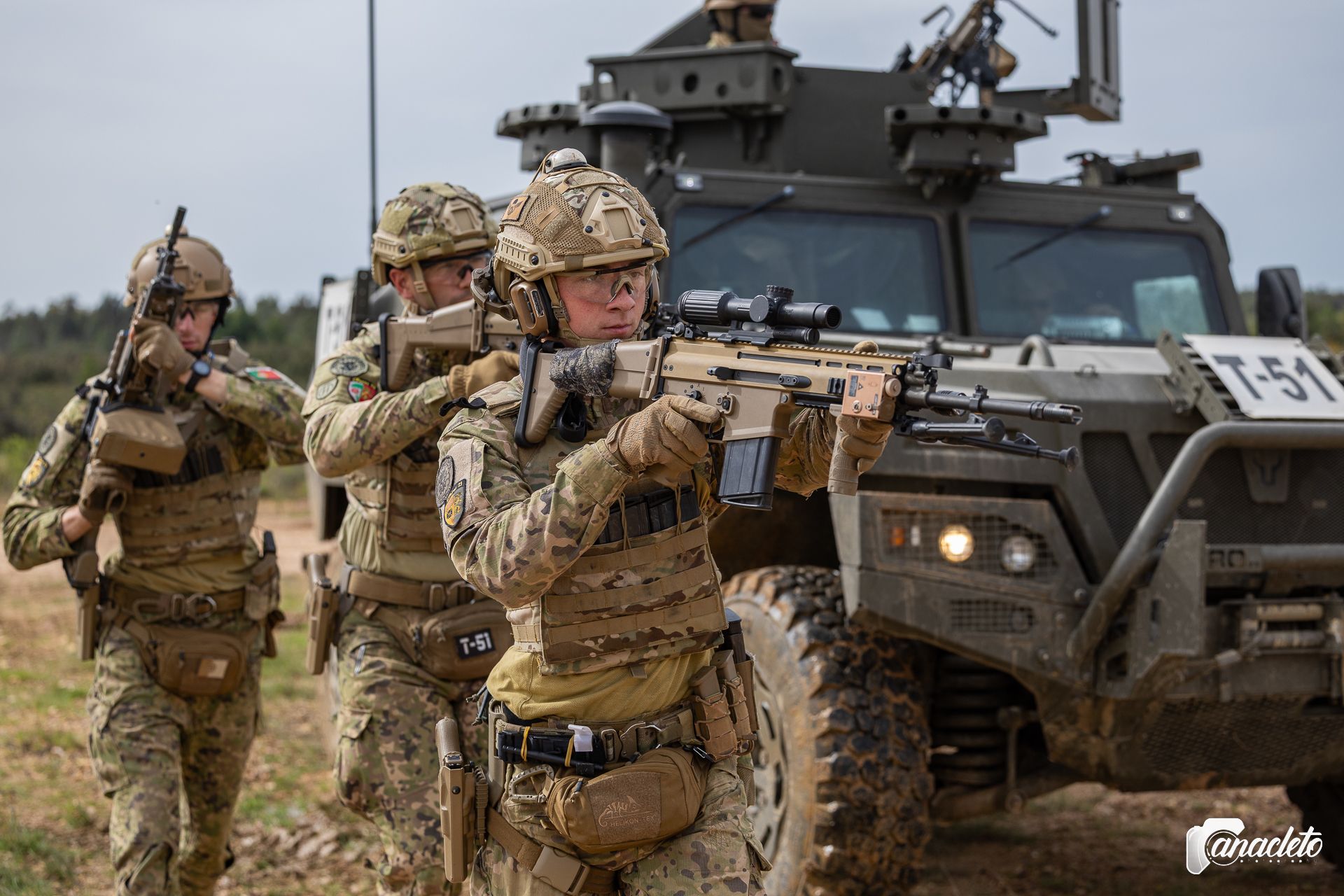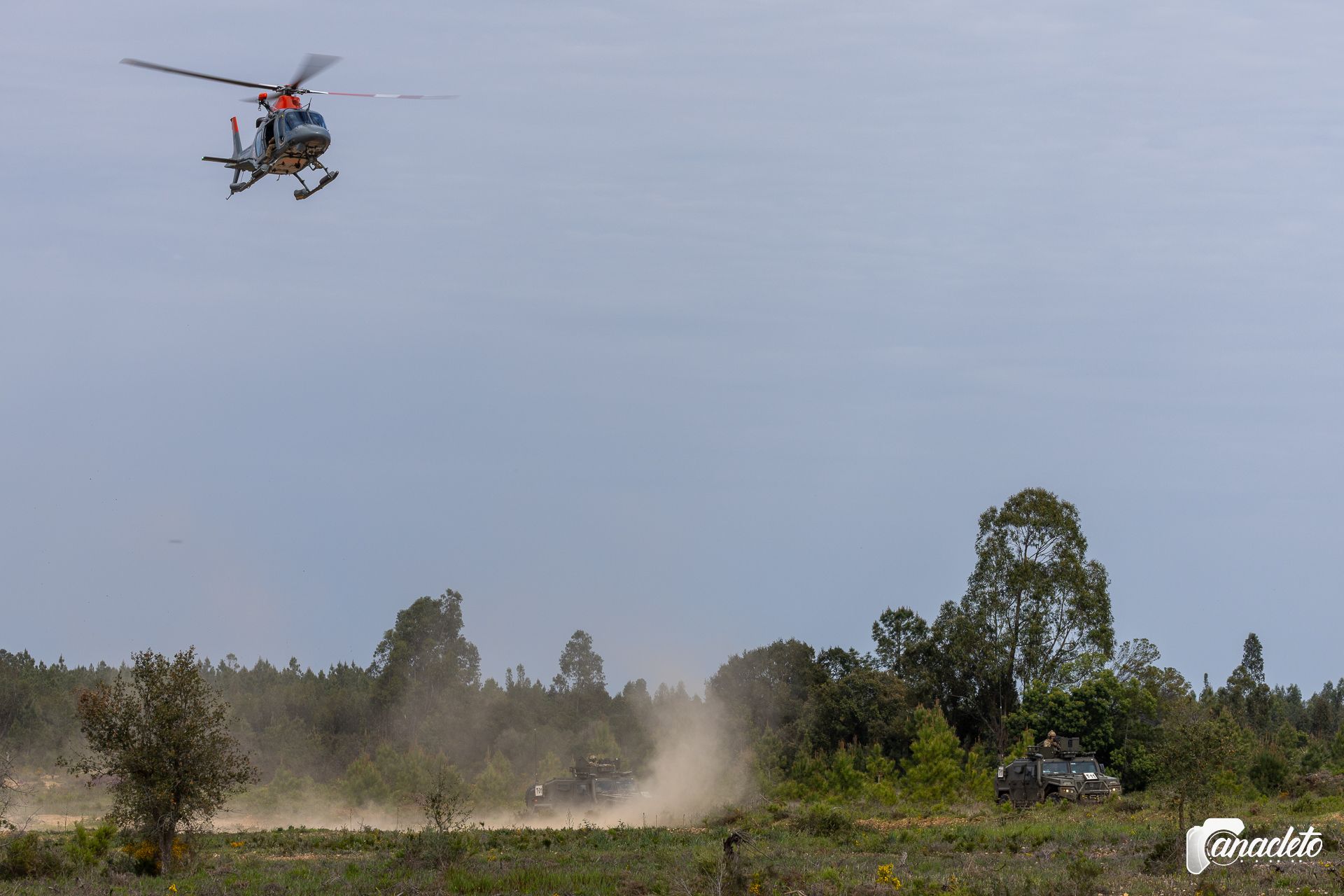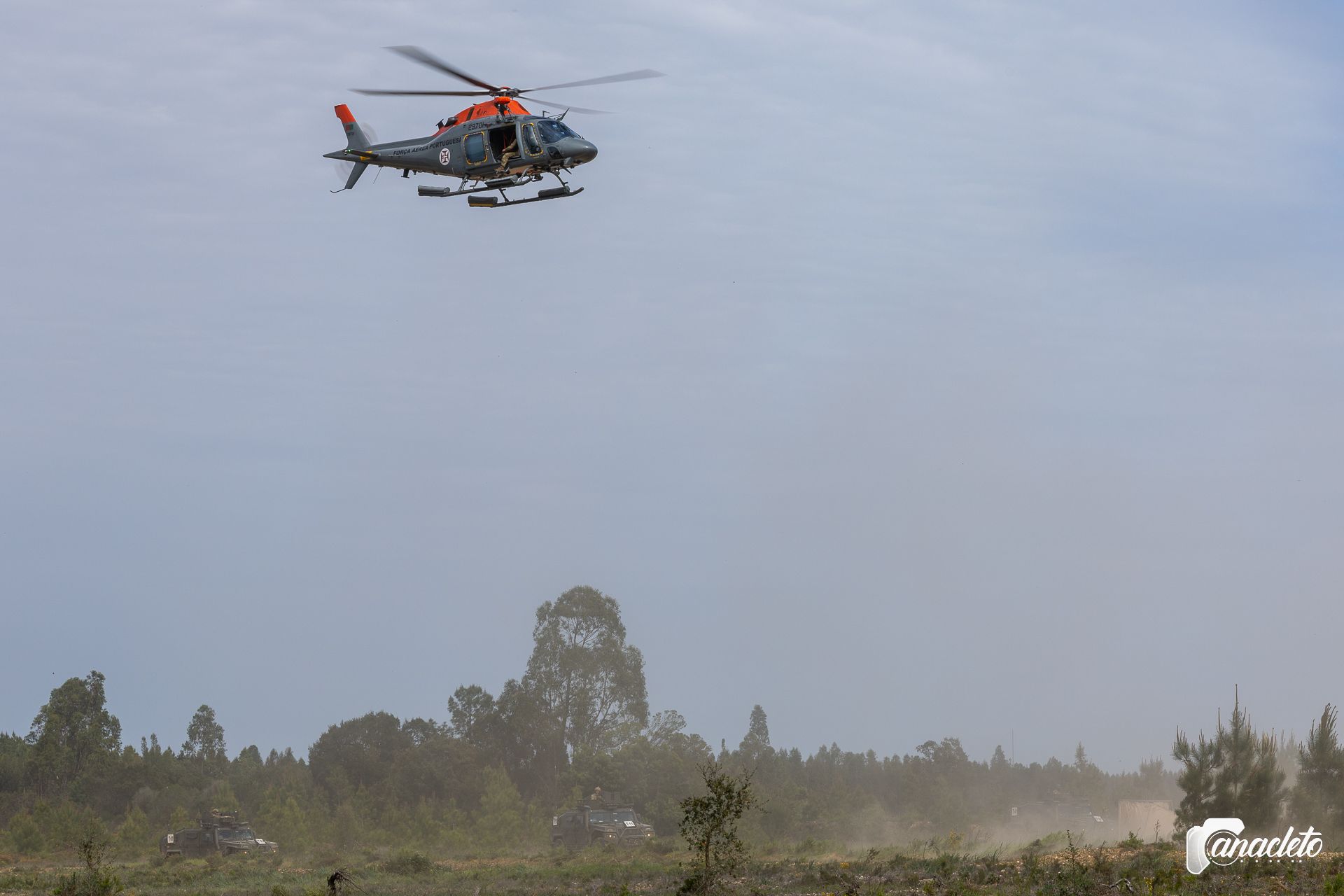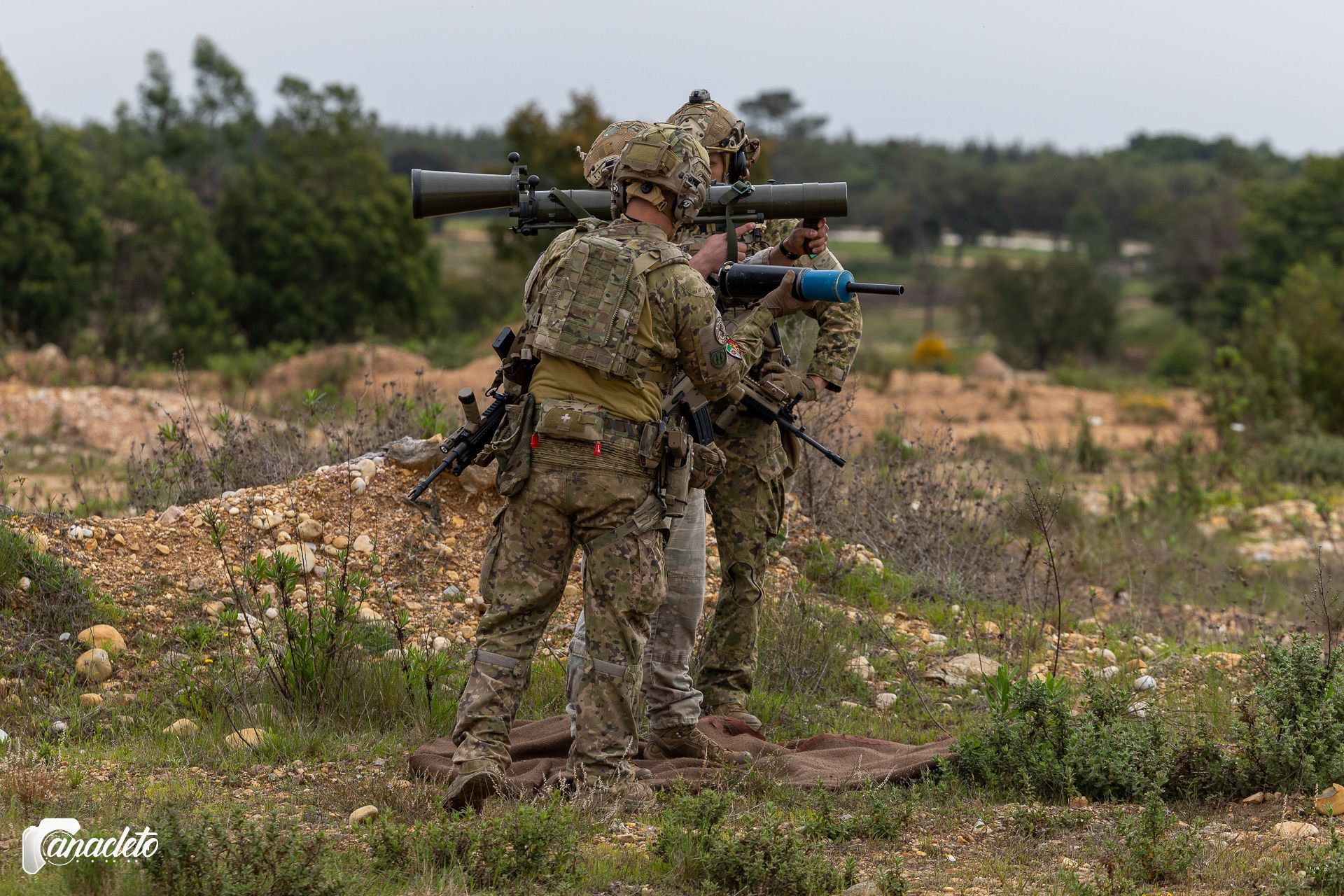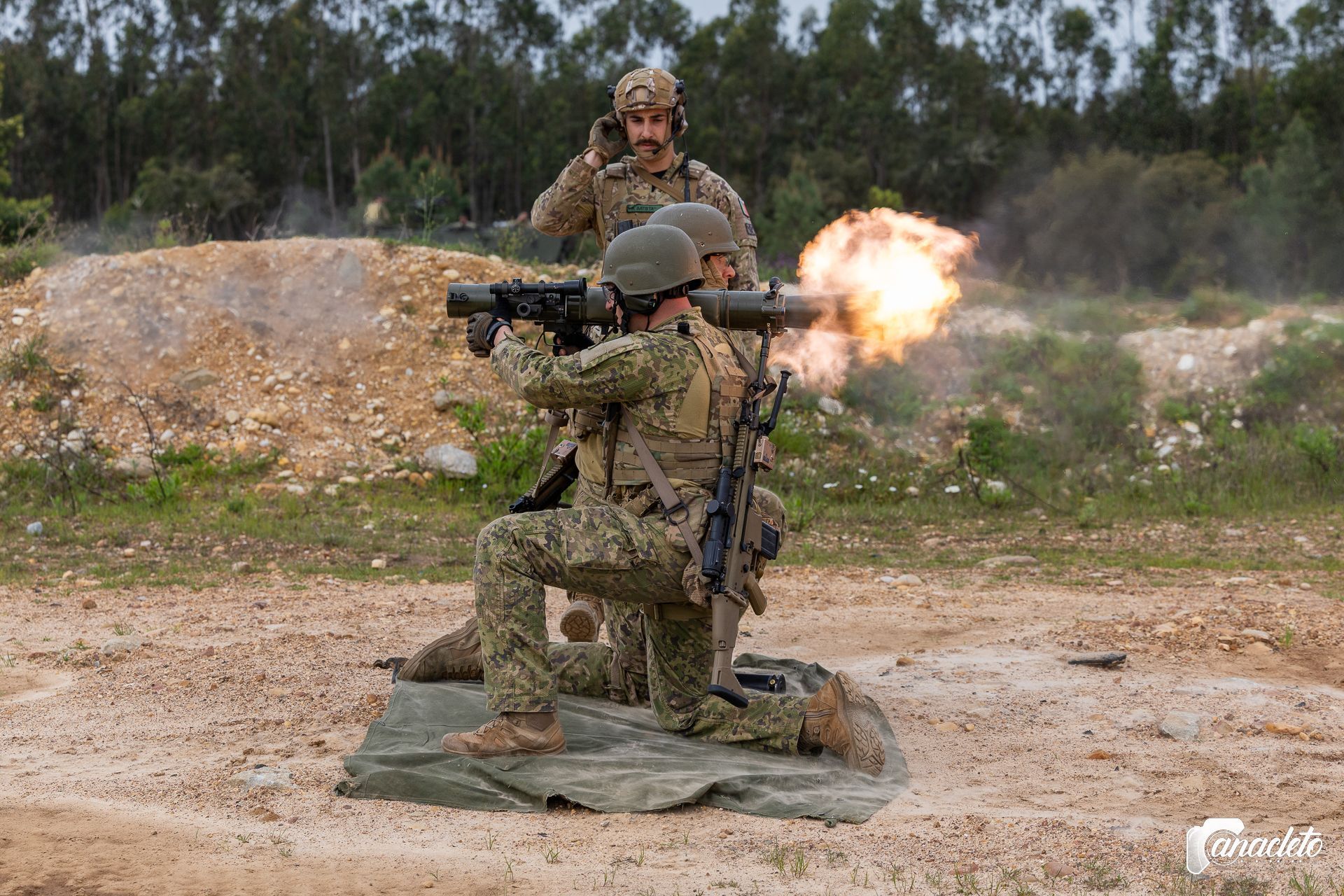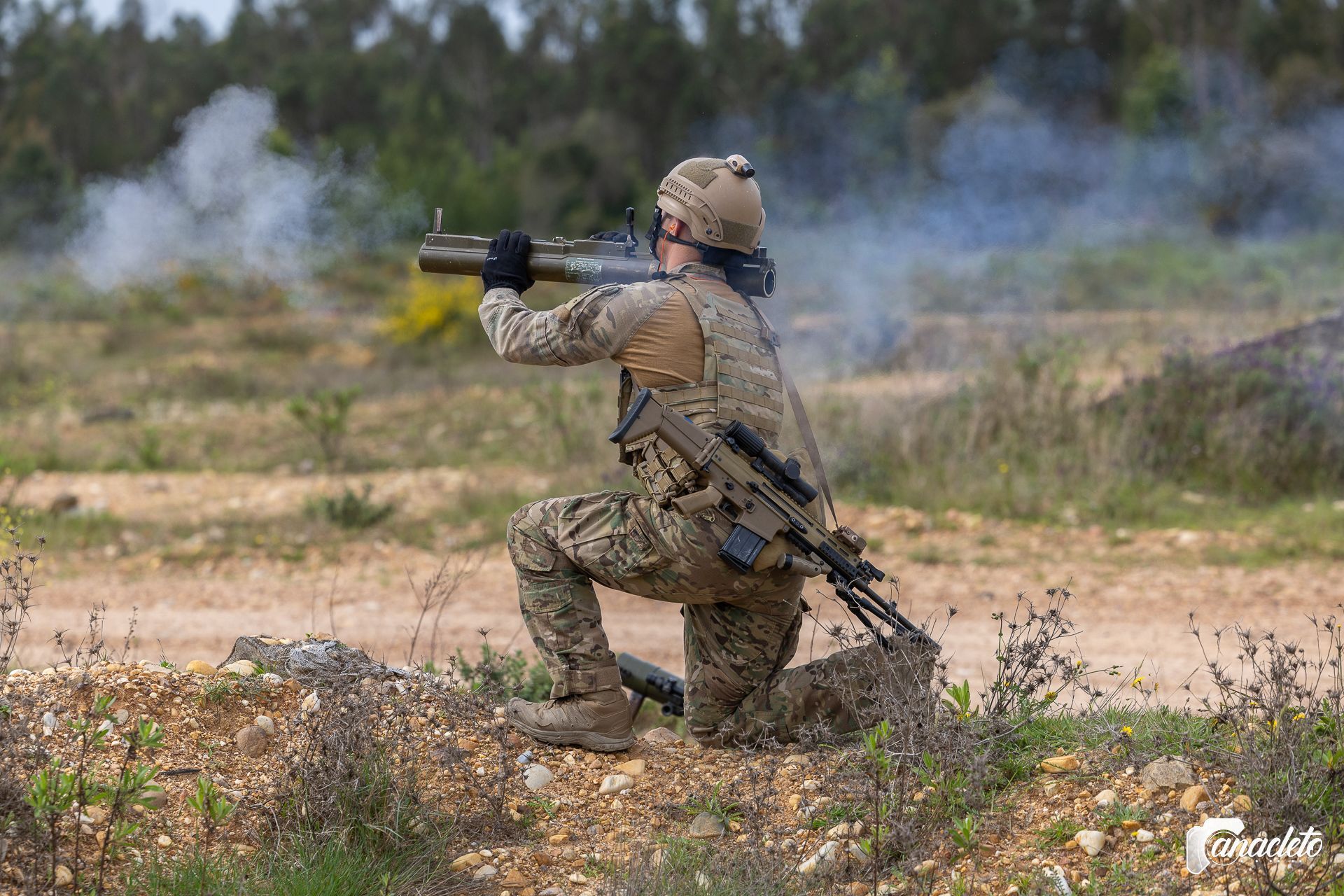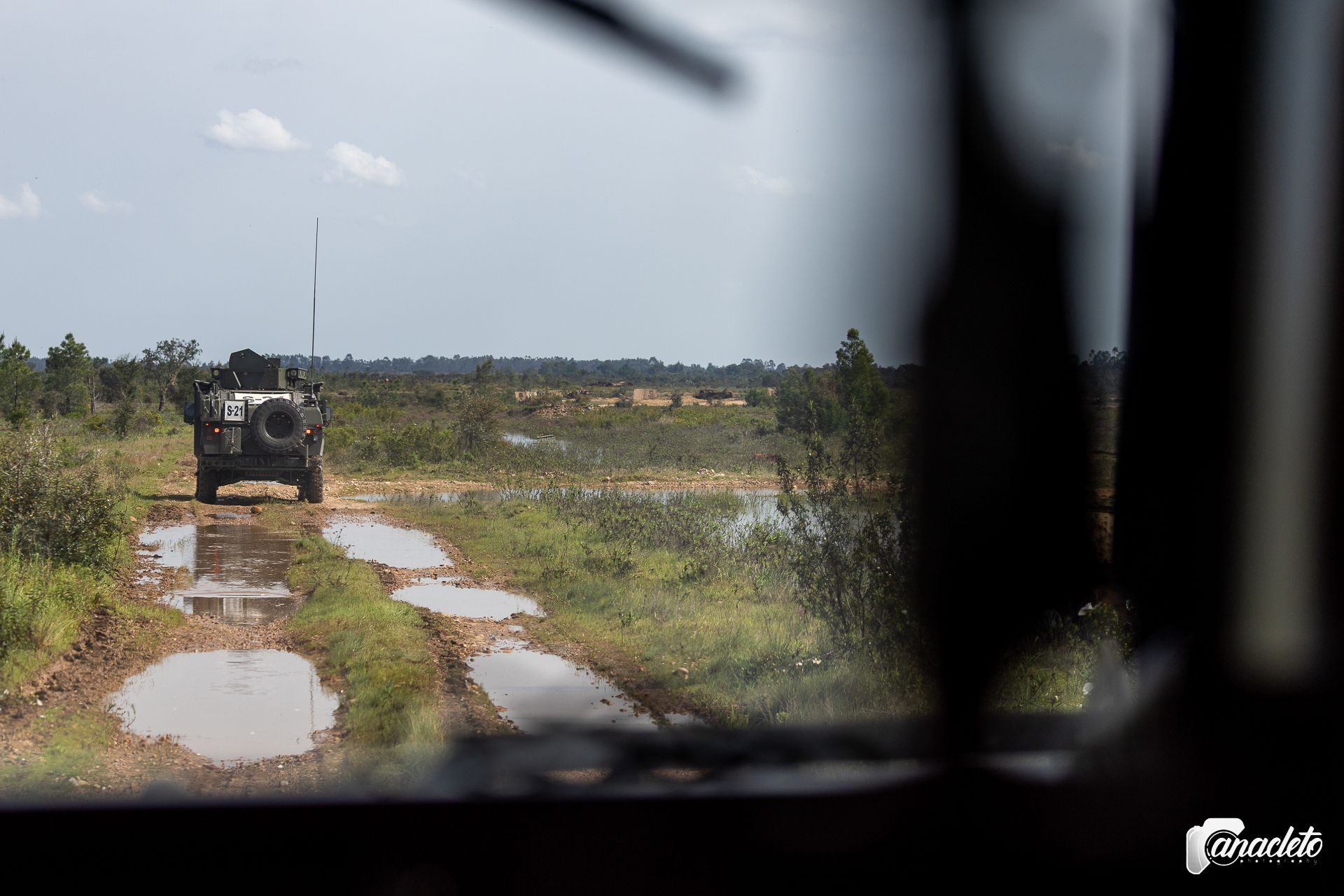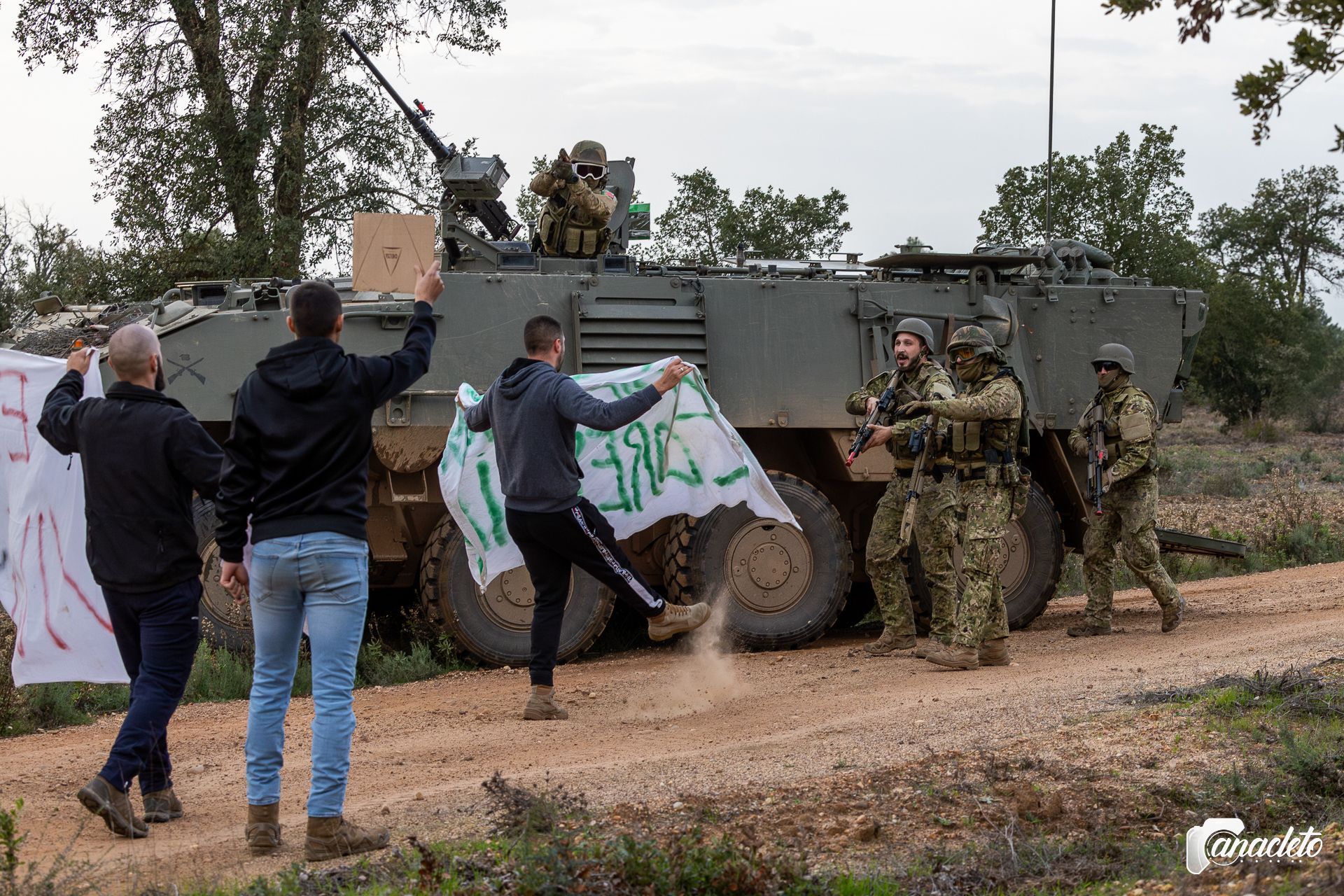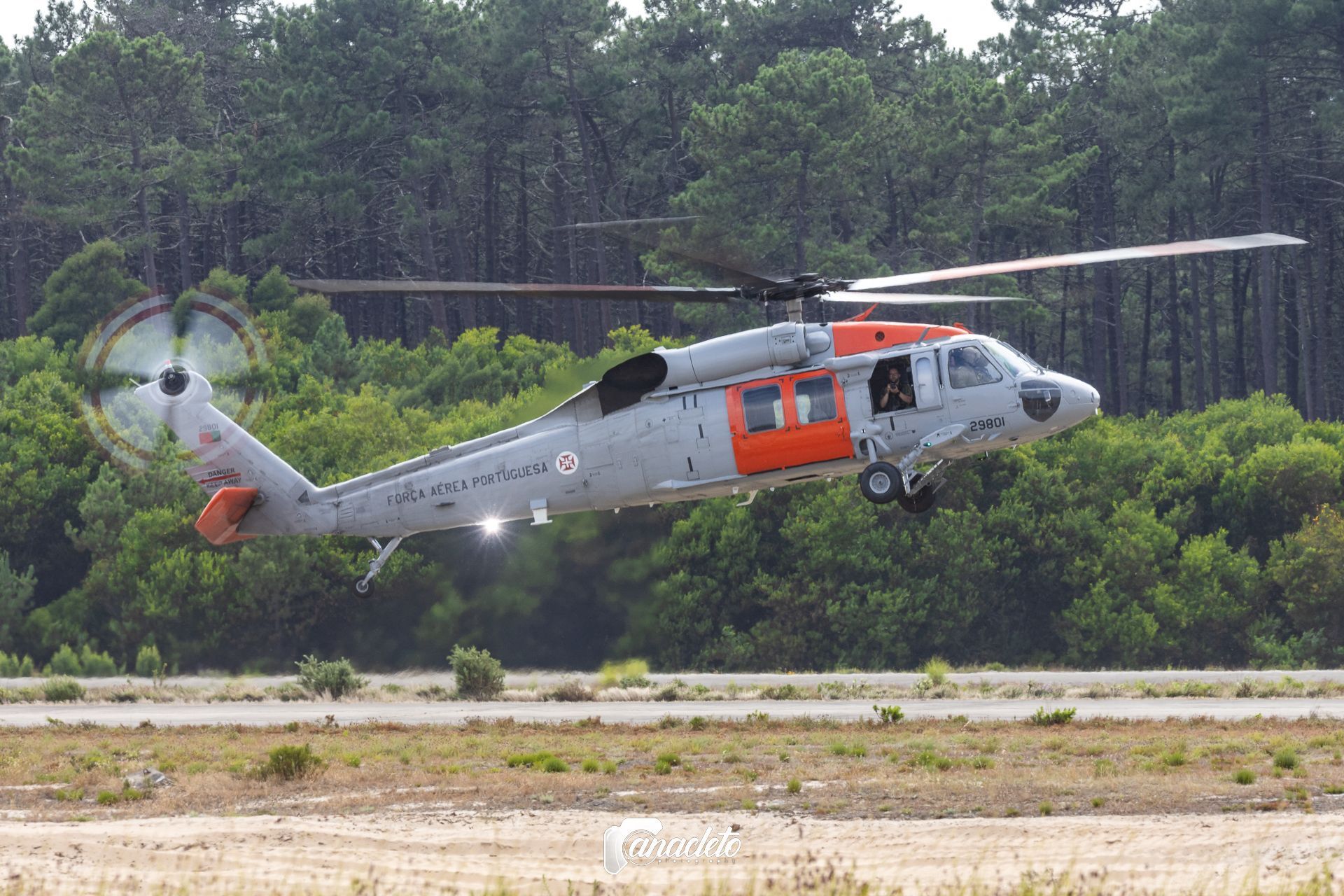BAMBARI 25: Preparing the 17th QRF for the Central African Republic
Between April 7 and 11, the Portuguese Army carried out Exercise BAMBARI 25 at the Santa Margarida Military Field, as part of the preparation of the 17th National Deployed Force (17th FND) that will be deployed to the Central African Republic (República Centro-Africana (RCA)). This force will be integrated as a Quick Reaction Force (QRF) in the United Nations Multidimensional Integrated Stabilization Mission in the Central African Republic (Missão Multidimensional Integrada das Nações Unidas para a Estabilização da República Centro-Africana (MINUSCA)).

A multidimensional force under national command
The 17th FND will be made up of 213 military personnel, 201 of whom took part in this readiness phase. The force is commanded by Lieutenant-Colonel Rui Borges and has as its core the 2nd Parachute Infantry Battalion (2. º BIPara), which is joined by several specialized modules:
- Pandur Module, with PANDUR II armoured vehicles with Remote Weapon Station (RWS);
- Maintenance Module, providing technical and logistical support;
- Health Module, prepared for medical response in an operational environment;
- Route Clearance (EOD) Team, specialized in detecting and neutralizing improvised explosive devices (IEDs);
- Mini-UAV Team, operating the Raven system, a small unmanned aircraft that enables surveillance, reconnaissance, fire regulation and Battle Damage Assessment missions.
- The Portuguese Air Force's TACP (Tactical Air Control Party) team, responsible for coordinating close air support and communications with air platforms, reinforcing interoperability between branches and joint response capacity.
This set of capabilities provides the 17th FND with a versatile, autonomous and appropriate operational response to the challenges of the Central African environment.
Realistic training based on operational experiences
During five days of intense activity, the soldiers carried out a series of tactical and technical maneuvers designed to replicate as closely as possible the operational conditions they will face in the Central African Republic.
Several simulated incidents were conducted based on real situations experienced by previous FNDs in the Theater of Operations. The maneuvers included:
- Reactions to ambushes;
- Protection of civilians and critical areas;
- Evacuation of wounded in a hostile environment;
- Patrol operations and interdiction of areas;
- Among others.
The main focus of the exercise was
operational readiness in a hostile environment, and it provided an opportunity to test procedures, reinforce operational discipline and train decision-making in high-pressure scenarios - key elements for ensuring the effectiveness of a QRF force in a high-risk environment.
But one of the highlights was the
Live Fire Exercises (LFX), which included
realistic combat scenarios with real fire, reinforcing the effectiveness of procedures and confidence in the weapons and equipment used.
Live Fire with helicopters and heavy weaponry
During the LFX, the soldiers carried out intensive live fire training involving various platforms and systems.
This exercise saw the integration of an
AW119 Koala helicopter from the
Portuguese Air Force's 552 “Zangões” Squadron, which was used as a platform for
heli-shooting. This capability allowed soldiers assigned to
Top Cover roles (close air cover for forces advancing on the ground) to practice firing light weapons in flight, in coordination with ground elements - a scenario that could have direct application in real missions in the Central African Republic.
There was also training with various weapons systems used in real theaters of operations:
- Carl-Gustav - a direct support weapon, effective against fortified positions or vehicles;
- LAW (Light Anti-Tank Weapon) - a portable weapon for individual use, ideal for fast and light operations;
- Browning M2 heavy machine gun mounted on a PANDUR II vehicle with RWS (Remote Weapon Station), identical to those already operating in the CAR, testing the integration of sensors, precision and remote control.
Portugal and MINUSCA: an ongoing commitment to peace
Portugal's participation in MINUSCA represents a
solid and lasting commitment to the United Nations and its stabilization efforts in conflict contexts. Since 2017, the
Portuguese Armed Forces have maintained a rotating presence in the Central African Republic and their soldiers have been recognized for their
discipline, responsiveness and effectiveness, characteristics especially valued in a QRF force, which can be called upon to intervene in critical situations at any time.
By deploying well-trained, highly mobile and disciplined forces,
Portugal actively contributes to protecting civilians, restoring public order and supporting peace-building in one of the most unstable countries on the African continent. This involvement not only strengthens Portugal's prestige within the United Nations, but also demonstrates its ability to fulfill international commitments in highly demanding missions.
Conclusion
The success of Exercise BAMBARI 25 confirms the expeditionary capacity of the Portuguese Army and the excellence of its paratroopers, ready to act in one of the most demanding theaters of operations in the world. Simulation with real fire, helicopter training and coordination between branches of the Armed Forces show that Portugal is once again prepared to fulfill its mission in the name of international peace and security.
